May 16-17, 1970
Indianapolis 500 Qualifying
Indianapolis, Indiana
For his rookie year, Tony landed a good ride in an older Eagle as second car to Johnny Rutherford on the respected Patrick Petroleum team. Patrick’s entry into Indy car racing came through sponsorship of fellow oilman Walt Michner’s team in the late 1960s. Patrick formed his team in 1970, and Johnny Rutherford qualified second in the No. 18 Patrick Petroleum Eagle/Offy in the team’s Indianapolis 500 debut.

Pat Patrick
During the first weekend of qualifications for the 54th Annual 500-Mile Memorial Day Classic at the Indianapolis Motor Speedway (May 16-17), 27 cars earned “temporary” spots in the select 33-car field.
The 1967 Indy Eagle wasn’t as good as his 1969 Eagle with which he’d won the 69 Formula-5000 Championship, but the crew nursed him up to speed carefully, until he had reached 167 to 168 by qualifying morning.
Those speeds promised to garner Tony the coveted Rookie of the Year award. Dan Gurney was impressed, wanted to know his chassis set up, and made similar last-minute changes to his car.


Adamowicz collection
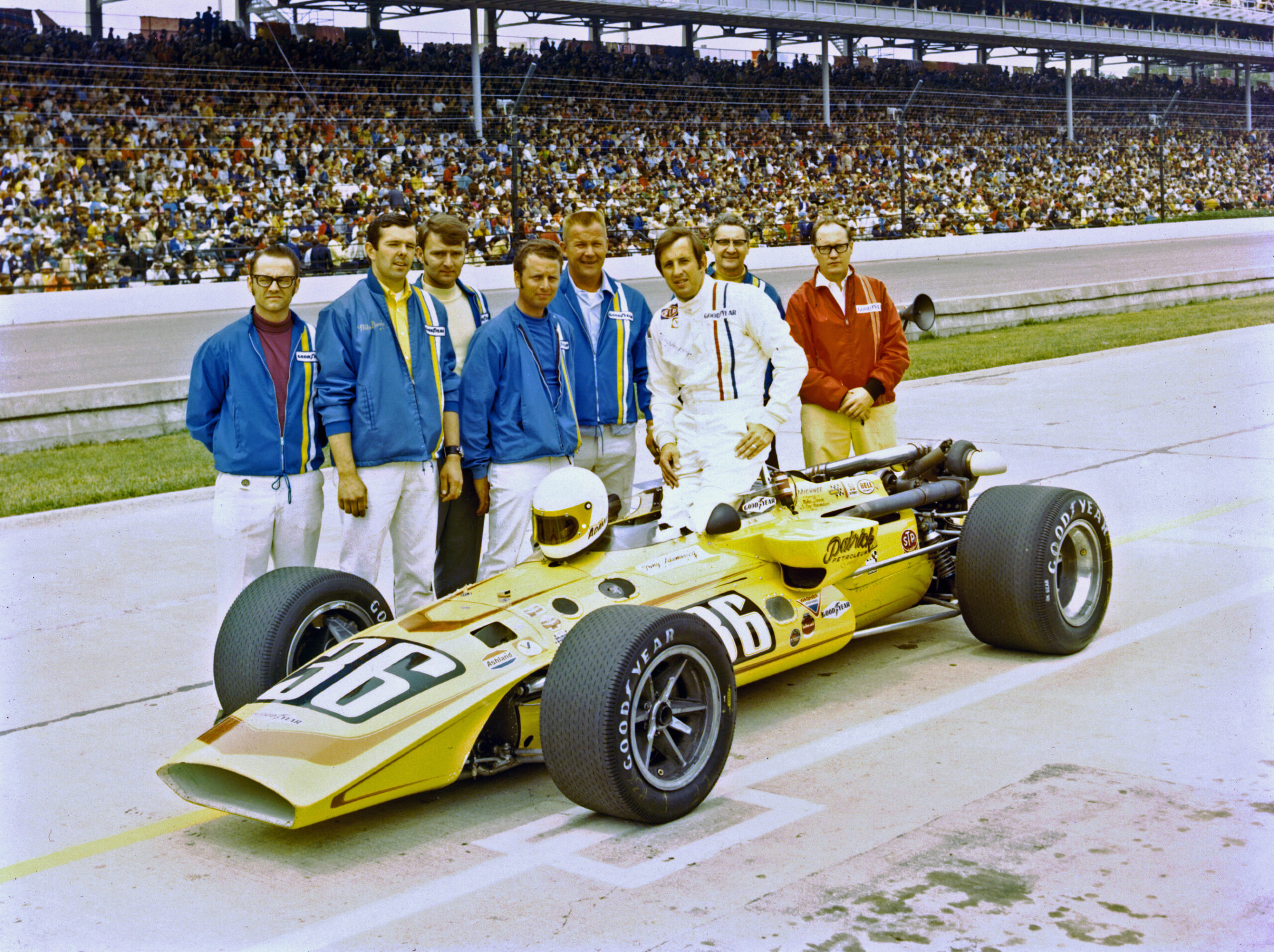
Adamowicz collection
My Indy Eagle was a 1967 model heavily modified to make it suitable for twice the 500 horsepower for which it was designed.
My crew chief at Indy, Leroy Newmeyer is the fellow with the blonde crew cut standing next to me. He’d previously worked for A. J. Foyt.
Pat Patrick is standing behind me in a red jacket in this photo taken just before my qualifying run. I drove for Michner/Patrick Petroleum and was hired by Michner as second car to Johnny Rutherford.

The legendary Jim McKay interviews Tony at the speedway for ABC’s Wide World of Sports.

Adamowicz collection
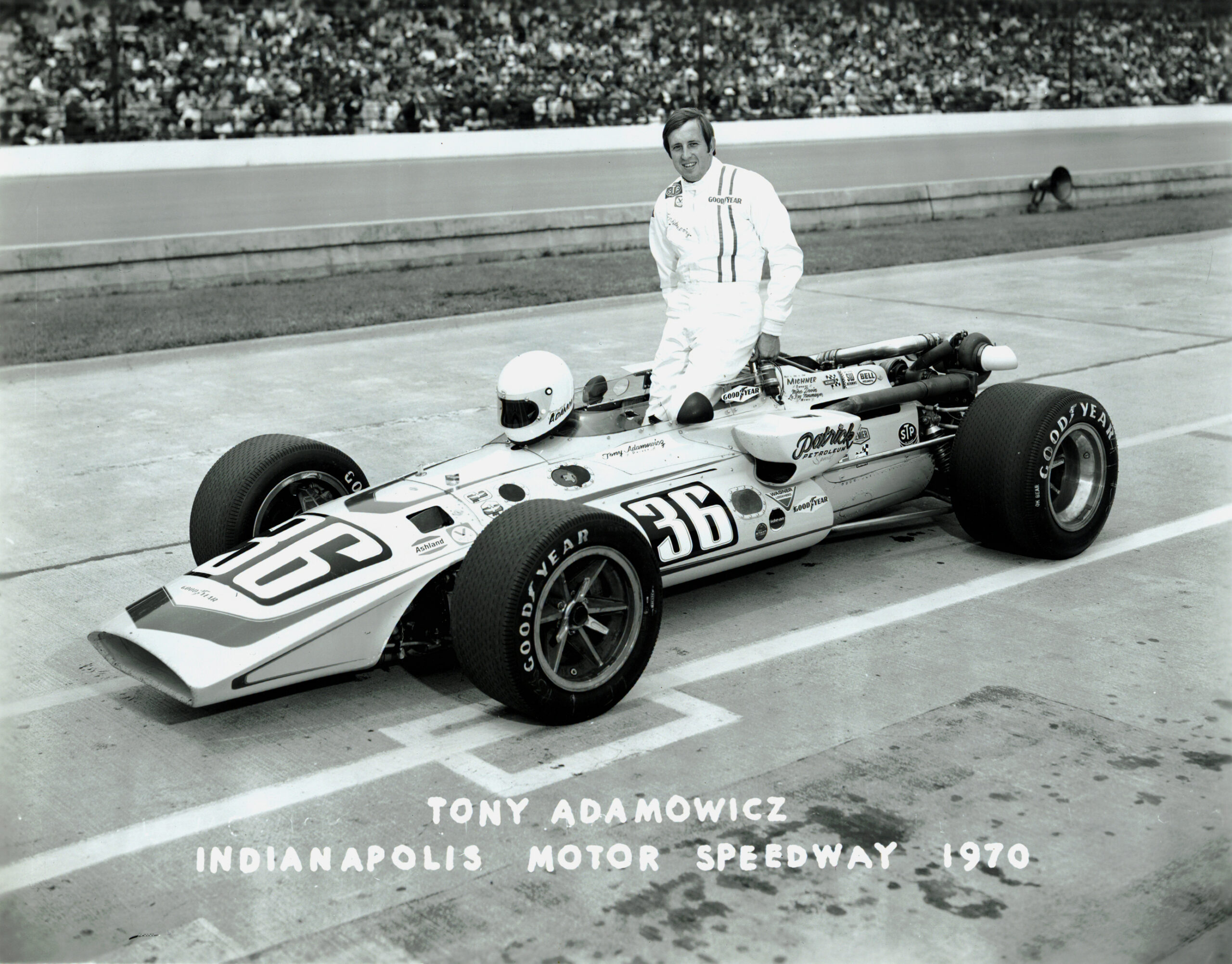
Adamowicz collection

Teammate Johnny Rutherford in his #18 Eagle. Note the nose spoiler and high downforce wedge-shaped bodywork at the rear.
Rutherford’s Eagle was pretty much the same as mine, however he had some downforce from a powerful nose spoiler and wedge-shaped rear bodywork ending in an upswept tail. My car had no downforce at all, quite a handful with a Turbo-Offy.

Adamowicz collection

Adamowicz collection – Dave Thomas photo
Johnny Rutherford (#18) and Tony (#36) – the 1970 Patrick Petroleum team.
Adamowicz collection
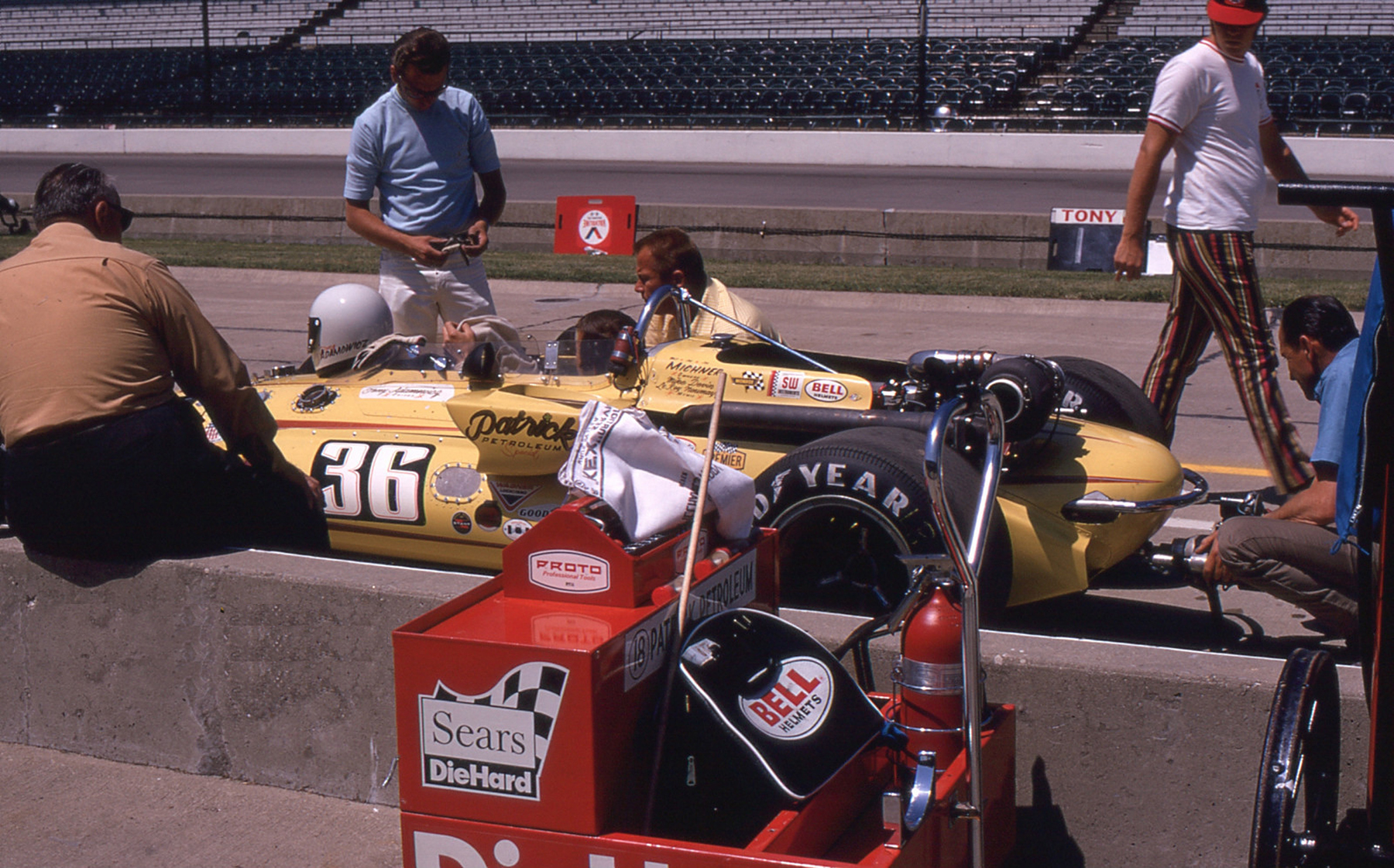
Adamowicz collection
Tony with Graham Smith and crew chief Leroy Newmyer.
Tony pulls out of the pits to qualify his 1,000 horsepower Eagle. Wings were banned until the following year, so the car had virtually no aerodynamic downforce.

Adamowicz collection – Image courtesy of Paul Castagnoll
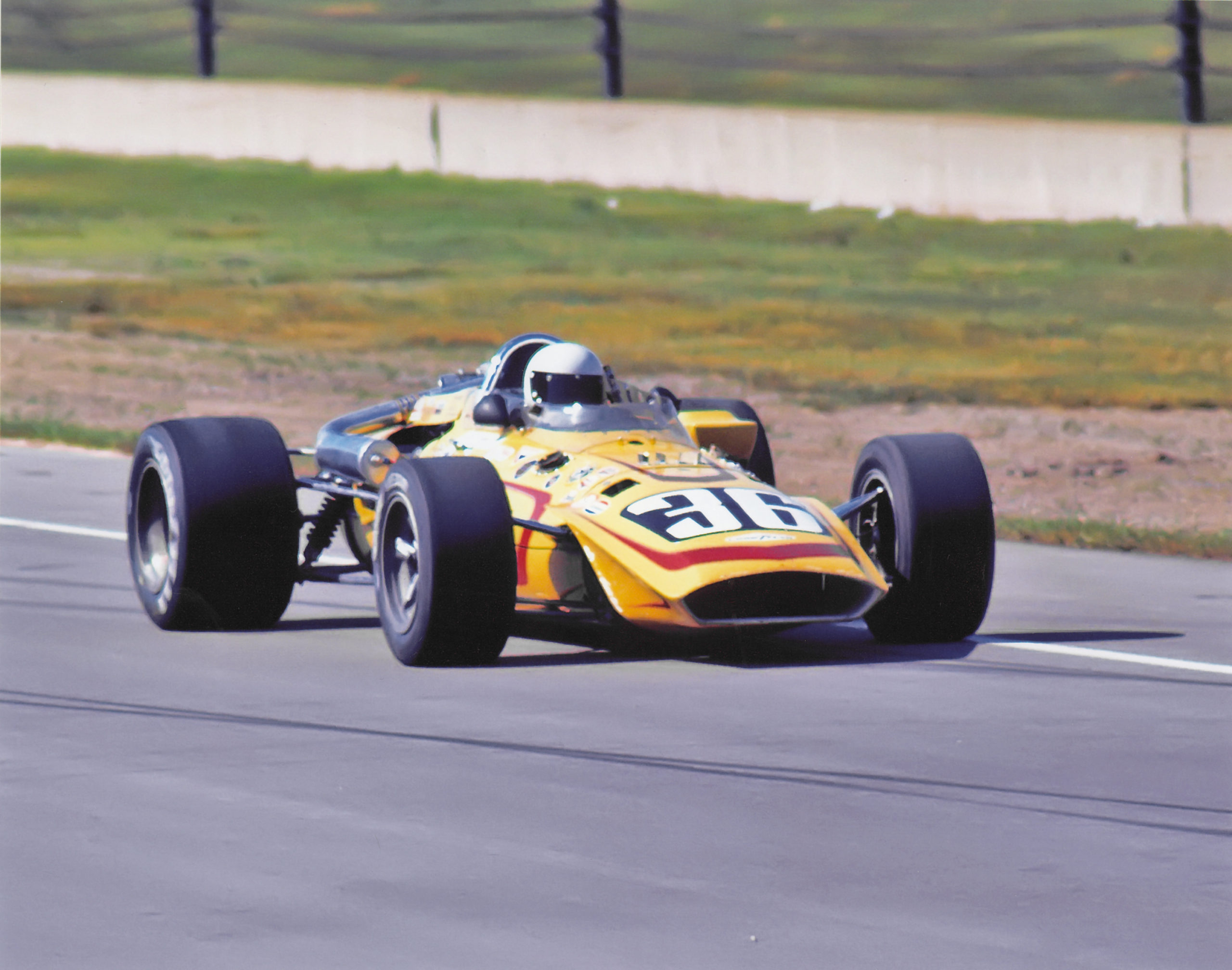
Adamowicz collection
I did around 140 -145 coming off the turns, fish tailing all the way thru the short chutes twice each lap. Johnny did around 150 maybe 155 with a lot of security in the turns. I was faster down the straights, 225 maybe, but could not go thru the turns like his car shown below. Since you spend 2/3 of your time cornering, our lap times were surprisingly close.
As it turned out, my teammate Johnny qualified at 170 in the front row, while I had run 168 in practice on qualifying morning. To put that in perspective, Dan Gurney qualified his brand-new Eagle in the fourth row at 166.
The next fastest beginner after me was Rick Meuther at 165. It looked as if I might become Rookie of the Year.
Tony roars down pit lane in the Patrick Petroleum Turbo-Offy Eagle.
Adamowicz collection – Image courtesy of Paul Castagnoll

Adamowicz collection

Here’s what happened when Tony Qualified:
A careless USAC official manning the track lights in turn 1 failed to notice that Tony was given the green flag for his four-lap qualifying run by the starter Pat Bedand. When Tony dove into Turn #1 at 225 mph, the fellow activated the yellow track lights. Everyone saw it.
Tony dutifully lifted and coasted through Turns 1 and 2. Then the green light flashed on for good, and Tony ran hard until receiving the checkered flag at the end of four laps. His first lap, ruined by USAC’s error, was only 160.8 mph. The second lap was 166.8, the third was 166.4, the fourth was 164.8.
Incredibly, Harlan Fengler, the Chief Steward at Indy, decided the yellow lap counted! So Tony became the only driver in the history of Indy to be Officially Qualified under a yellow light. Amid much controversy, and despite protest from sponsors and car owners alike, Fengler (who drove at Indy in 1923, and openly disliked road race drivers) insisted that Tony could not re-qualify the car. That’s the way things were done in those days. Of course, the four lap average was dismal and would not stand. Taken alone, Tony’s three good laps would have placed him solidly in the race starting beside Dan Gurney.



Adamowicz collection – Image courtesy of Paul Castagnoll
Tony qualifies under an “accidental” yellow light.
Vortex Generators were used to redirect the air flow around the cockpit. It seems the airflow was buffeting my helmet down the straight away so badly that I could not read the pit boards. I wanted larger numbers on it, Johnnie Rutherford could see my boards with no problem. I immediately went over to the infield medical facilities and had my eyes re-checked. The doctor indicated that my eyes were among the best he had ever tested at Indy. Frustrated, I then worked on the job of redirecting the air. I tried fences at the top edges of the screen along the sides to keep air from buffeting my helmet. That helped, however I went to a speed shop and picked up some vortex generators and started placing them at the leading edge of the windscreen. That did the job, Hooray!, I could read the pit boards. Apparently, Johnnie’s air around his car was different than mine because he didn’t need them. Maybe it was because I sat a little higher in the cockpit.

Adamowicz collection – Michael Keyser photo (autosportsltd.com)
He would have been the fastest rookie by a considerable margin, hence a shoo-in for Rookie of the Year. Predictably, a week later Tony was bumped from the field by Bill Vukovich and forced to shop around for another ride. Now began the desperate search for a “diamond in the rough.”
With the sound of a Turbo Cosworth in the background, Tony considered the #45 Weinberger Homes Eagle, a four-year-old car that Ronnie Bucknum had driven the year before. Bucknum had qualified it at 166.6, so the car should have been OK. But Tony soon discovered that Al Miller had practiced in it on Monday the 18th and walked away without comment. Worse yet, NASCAR star Charlie Glotzbach had spun it three different times and also walked. Tony wisely resumed his search, making the rounds of various garages in Gasoline Alley looking for a decent ride.
Tony decided against trying the old #45 Weinberger Homes Eagle.

Adamowicz collection – Image courtesy of Paul Castagnoll
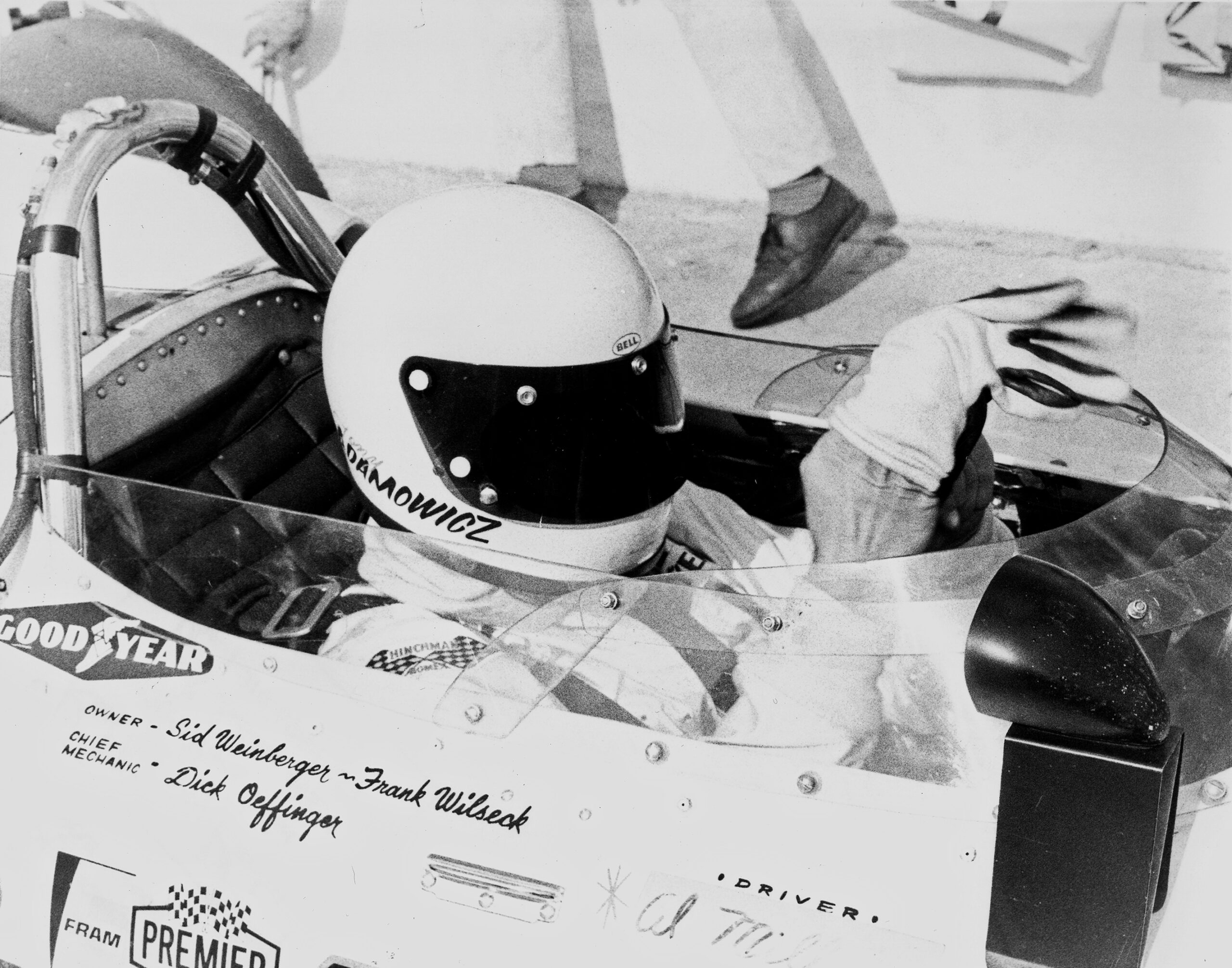
Adamowicz collection
In the Weinberger Homes Eagle
Soon, Tony was invited to try the Thermo-King Gerhardt that Gary Bettenhausen had qualified the previous year at 167.77. At the time, that was good for the 3rd row, starting just ahead of Dan Gurney. That sounded promising, but something was dreadfully wrong. The Gerhardt was bog slow. They had tried several different drivers to no avail. Gary Bettenhausen himself could do no better than 160 in it, nearly eight mph slower than he’d managed the previous year. Tony managed 161, but then the car bit him.

Adamowicz collection
A year earlier, Gary Bettenhausen qualified the Thermo-King Gerhardt in the third row.
I knew the car wasn’t right, but the crew said don’t worry about it, cranked the wastegate closed for max boost and sent me out. That gave the me 1,000 horsepower instead of 800. As I applied throttle coming out of turn 1, the boost kicked the car. In my inexperience, I got up in the gray, remembered what Roger McCluskey told me: “When in that situation, spin it to the infield.” I did three 360’s heading toward the short chute wall between 1 & 2. I started pumping the brakes to no avail, it just brushed the outside wall. Damage to the car was minor, but it couldn’t be repaired in time for another qualifying attempt.
In my panic, I forgot the brake pedal was not in the center as normal, it was to the very left of the cockpit. All the time I was punching the brake pedal, it was actually the clutch!
Tony looks over his shoulder and thinks: “I’ll tell ’em its got a radiator leak.”
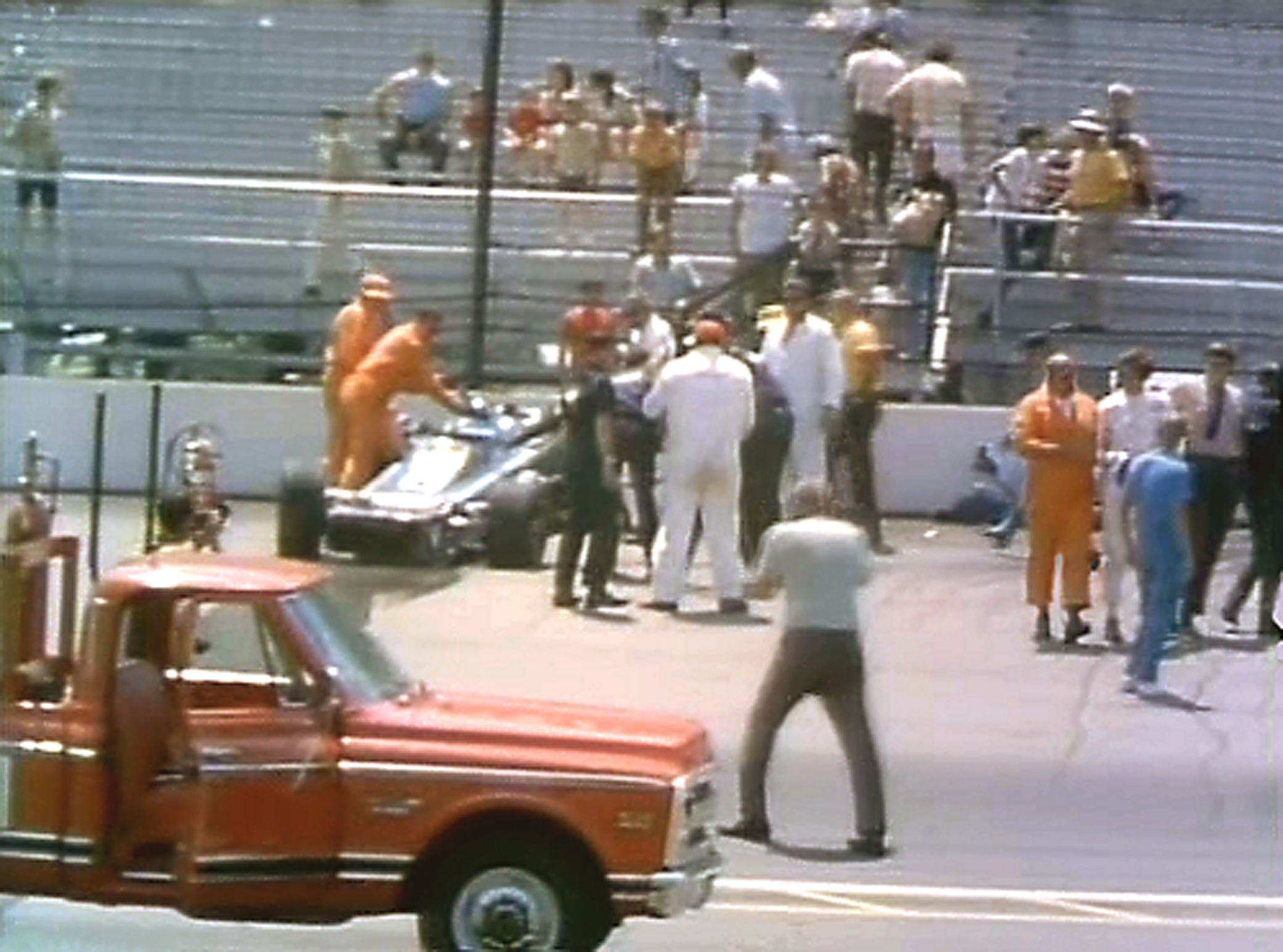
Adamowicz collection – Image courtesy of Paul Castagnoll

Adamowicz collection – Image courtesy of Paul Castagnoll
Tony leaps out of the slightly damaged #78 Thermo-King Gerhardt
The world’s best drivers have ridden in Conkle ambulances.

Adamowicz collection – Image courtesy of Paul Castagnoll
I was royally screwed at Indy to say the least. If Andretti, or Unser had to carry my yellow qualifying lap, they wouldn’t have made the race either. I didn’t think I’d ever recover from the Indy fiasco. It was my worst bad dream. Unless I was able to pull off a major sponsorship, I would never run an Indy car again. I didn’t get an opportunity to qualify another car. I just watch in agony as I was bumped from the field. The Auto Racing Writers & Broadcasters Association awarded me the Jigger Sirois award. It’s the award no one wants, presented annually to the driver who endures the worst hard luck at Indy. I worried it might cripple my career, but as things turned out, I enjoyed racing on five continents.
A short video of Tony’s qualifying efforts can be seen here.
Jigger Award: American Auto Racing Writers and Broadcasters Association
This award is named in honor of former driver Jigger Sirois. In 1969, rookie Sirois was the first driver out to qualify. After a couple laps, his crew waved off his run, figuring it to be unsatisfactory. A few minutes later, rain began to fall, washing out the entire first weekend of qualifying. Had Sirois finished his qualifying run, he would have been the only driver to qualify on pole day, and thus would have secured the pole position. Sirois failed to qualify the following weekend, and in fact, never qualified in his career. The award was created and given to the participant who experiences hard luck during the month, and often to the driver who is last to get bumped from the field. It is awarded annually at the Indianapolis 500 AARWBA breakfast and is made up of a used, gold-colored metal whiskey jigger mounted on a base. The plaque is on permanent display at Indianapolis Motor Speedway Hall of Fame Museum.

Tony’s Jigger award
Sidebar from Gary Wheeler:
A Bobby Unser story:
Bobby drove our works AAR Eagle after Gurney retired at the end of this season. Before USAC allowed the use of wings, Bobby would often ask John Miller, our engine man, to turn the turbo boost down because his car wasn’t manageable with max power. Our best turbo-Offy engine had 1,150 horsepower at maximum boost.
“Turbo lag” works both ways. What few people realize, is that when the driver lifts off the throttle, the engine will briefly continue to produce about 500 horsepower. The car has so much drag, that at top speed it instantly slows. But if the driver has applied full throttle while exiting a corner, and needs to back off for an instant, that residual 500 horses can light the rear tires like a dragster. It only takes a moment.

Adamowicz collection
Turbo Offenhauser installation in Rutherford’s Eagle – teammate to Tony Adamowicz
At that point, according to Bobby Unser, the car wants to “spin like the knob on a shithouse door”. The truth is: too much power was nearly unmanageable in those days of inadequate aero downforce. As you can see, Tony’s #36 Eagle had no downforce at all! I was an Eagle designer at the time, and keenly remember it was crash, crash, crash until USAC permitted wings the next year.
You’re probably thinking that Tony wrecked the Eagle, but the truth is, he didn’t have a bit of trouble with it because his crew had so carefully groomed him to build speed gradually. But Indy is a cruel place.
With heat like this, the Turbo Offenhauser’s power was limited mostly by its own water jacketing.

Adamowicz collection – Jay Jones photo

